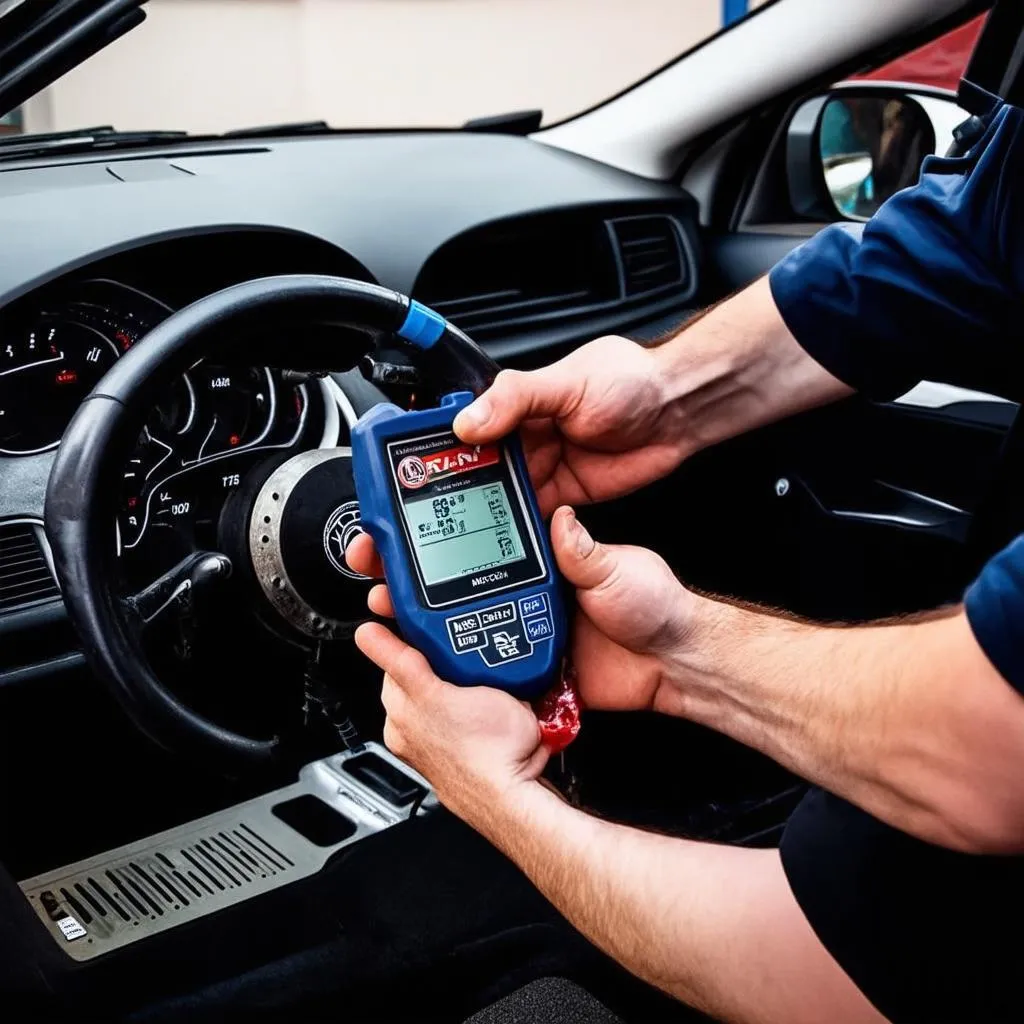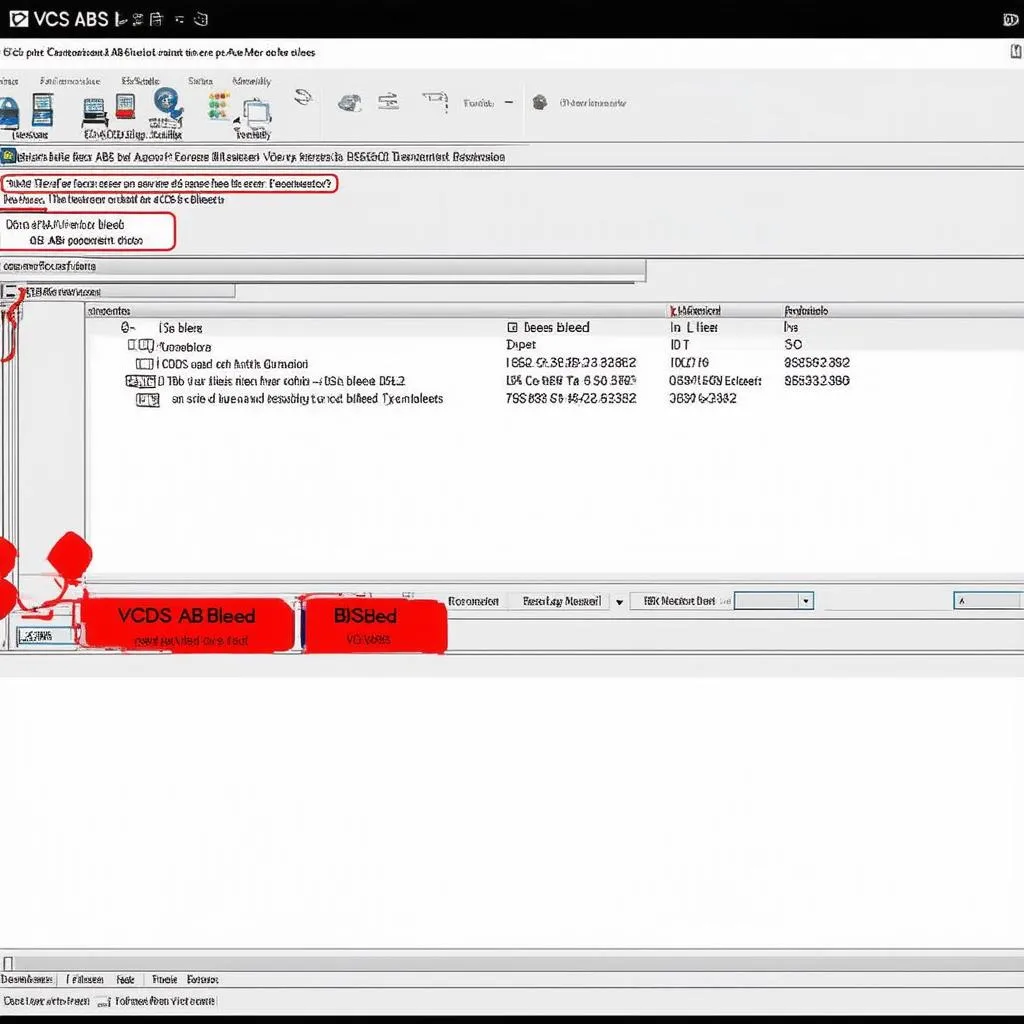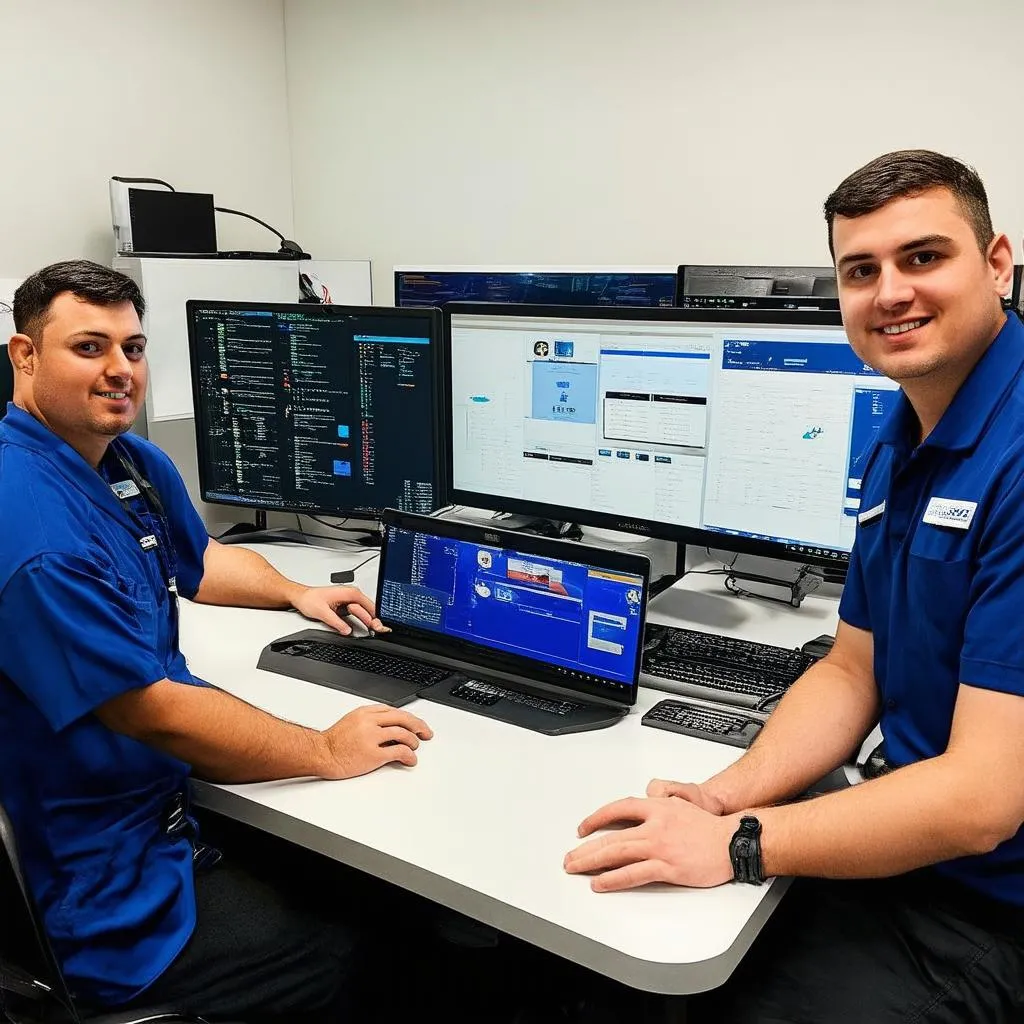VCDS ABS Bleeding: A Comprehensive Guide for European Car Owners
Have you ever experienced a spongy brake pedal or noticed your car pulling to one side during braking? These could be signs of air in your brake lines, a common problem that can be easily addressed with a proper brake bleed. While most mechanics use traditional methods to bleed brakes, there’s a more efficient and effective solution: using your VCDS scan tool for ABS bleeding.
Why Use VCDS for ABS Bleeding?
 vcds-abs-bleed-procedure
vcds-abs-bleed-procedure
Many European car owners have discovered the power of VCDS, a versatile diagnostic tool that allows you to access and control various vehicle systems, including the ABS (Anti-lock Braking System). While VCDS is primarily known for its diagnostic capabilities, it can also be used to perform ABS bleeding, offering several advantages over traditional methods:
1. Efficiency: Using VCDS for ABS bleeding streamlines the process, saving you time and effort.
2. Accuracy: The VCDS-assisted ABS bleed ensures that all air is removed from the system, leading to a more responsive and effective braking experience.
3. Ease of Use: With the proper instructions, even novice mechanics can perform ABS bleeding using VCDS.
4. Cost-Effectiveness: By performing ABS bleeding yourself, you can save money on costly mechanic visits.
VCDS ABS Bleeding Explained
What is ABS Bleeding?
ABS bleeding is a process of removing air from the brake lines and hydraulic system. The ABS system uses a hydraulic pump and sensors to prevent wheel lock-up during braking. When air is present in the system, it compresses under pressure, resulting in a spongy brake pedal and reduced braking efficiency.
How VCDS Facilitates ABS Bleeding
VCDS allows you to activate the ABS pump, which forces the brake fluid through the system and dislodges any trapped air. This process is more effective than traditional methods that rely on manual bleeding.
The VCDS ABS Bleeding Procedure
 vcds-abs-bleeding
vcds-abs-bleeding
Performing a VCDS ABS bleed involves a sequence of steps:
- Connect VCDS: Connect the VCDS cable to your car’s OBD-II port.
- Select ABS Module: Navigate through the VCDS menus to access the ABS control module.
- Activate ABS Pump: Use the VCDS software to activate the ABS pump.
- Bleed Brake Lines: Open each brake bleeder valve individually and allow fluid to flow until air is no longer visible.
- Check Fluid Levels: Ensure the brake fluid level is adequate.
Common Questions about VCDS ABS Bleeding
Q: Can I perform ABS bleeding myself?
A: While it is possible to perform ABS bleeding yourself using VCDS, it requires familiarity with the software and a basic understanding of brake systems. If you are unsure, consulting a professional mechanic is recommended.
Q: What VCDS version do I need for ABS bleeding?
A: VCDS version 18.9 or later supports ABS bleeding on most European cars.
Q: Which European cars are compatible with VCDS ABS bleeding?
A: VCDS is compatible with a wide range of European car models, including Volkswagen, Audi, Skoda, Seat, and more.
Tips for Successful VCDS ABS Bleeding
- Use fresh brake fluid: It’s crucial to use high-quality brake fluid for optimal performance and longevity.
- Check for leaks: Before performing the bleed, carefully inspect for any leaks in the brake system.
- Be patient: Allow sufficient time for the ABS pump to operate and for the air to escape.
- Consult the VCDS manual: Refer to the VCDS user manual for detailed instructions specific to your car model.
Related Articles and Resources
Looking for Expert Help?
 vcds-technical-support
vcds-technical-support
If you require assistance with VCDS software or have questions about ABS bleeding, reach out to our team of automotive experts. We offer 24/7 support and can help you achieve a smooth and successful ABS bleed.
Contact us via WhatsApp: +84767531508
Conclusion
Mastering the art of ABS bleeding using VCDS opens a world of possibilities for European car owners. By taking control of this critical maintenance task, you can ensure your car’s brakes perform optimally, providing peace of mind and enhanced safety on the road.
Remember, if you are unsure about any aspect of Vcds Abs Bleeding, don’t hesitate to reach out to a professional mechanic or our team at Cardiagxpert. We are always here to help!
Share your thoughts and experiences with VCDS ABS bleeding in the comments section below!
